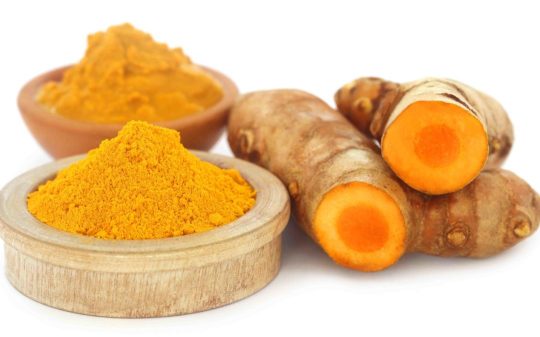Dr. Shapero’s Top 9 Anti-Inflammatory Foods
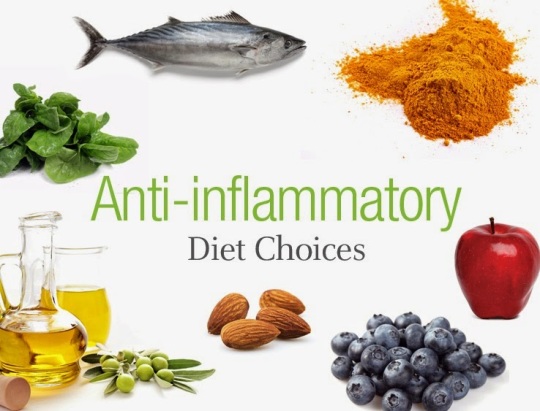
The diseases that seem to plague our society would appear to have at least one main common factor. Inflammation. Diseases such as arthritis, heart disease, diabetes, high blood pressure, asthma, inflammatory bowel disease (IBD), psoriasis as well as others have one common denominator which require a life style change to effectively deal with these problems.
Anti-Inflammatory Foods Can Transform Your Health
Inflammation is not necessarily a bad thing, in fact it is a necessary function in the body. When the body is injured or ill, the lymphatic (immune) system springs into action, bringing the immune system’s army of white blood cells to the area of concern via increased blood flow.
With the increased attention to the area, there might also be swelling, redness, heat, and pain or discomfort. You’ve probably seen this immune response in action, as a cut or scrape becomes hot and puffy around the wound while the extra blood runs into the area. Inflammation, in a healthy body, is the normal and effective response that facilitates healing.
Sadly, we know this isn’t the whole story. When the body gets out of balance systems can either underperform or over perform.
When the immune system overreaches and begins attacking healthy body tissues, we’re met with an autoimmune disorder like leaky gut and inflammation in otherwise healthy areas of the body. This is also the case for arthritis and fibromyalgia symptoms, as well as celiac and irritable bowel disease (IBD). For diseases that aren’t autoimmune, inflammation can still play a part as the body continuously tries to heal the tissues in a given area. Asthma creates inflamed airways; inflammation related to diabetes affects insulin resistance; and so on.
Despite the connection between inflammation and prevalent diseases, as well as the connection between diet and inflammation that we’ll explore, diet isn’t always analyzed in response to inflammation. In a 2014 study on diet and IBD, 33 percent of the patients in the study opted against the proposed anti-inflammatory diet. All of the patients who participated and consumed anti-inflammatory foods found enough relief that they were able to discontinue at least one of their medications. Still, the study notes that physicians typically offer “if it hurts, don’t do it” advice instead of clear dietary guidelines.
Certainly, there is more we can do to promote anti-inflammatory lifestyle changes.
The Anti-Inflammatory Diet
Standard American diets (appropriately called SAD) are never touted as exemplary, but when talking about inflammation, it becomes vitally important to rethink our typical diets. As a report from the National Institute of Allergies and Infectious Diseases reported:
While today’s modern diet may provide beneficial protection from micro- and macronutrient deficiencies, our over abundance of calories and the macronutrients that compose our diet may all lead to increased inflammation, reduced control of infection, increased rates of cancer, and increased risk for allergic and auto-inflammatory disease.
To move toward an anti-inflammatory diet and anti-inflammatory foods, we primarily move away from the abundance of overly processed, unbalanced diets of the West and toward the ancient eating patterns of the Mediterranean. A Mediterranean diet comprises plenty of fresh fruits and vegetables, little to no red meat, certainly no chemicals or meat additives, and an abundance of omega-3 foods.
As we look into the anti-inflammatory components of certain foods and herbs, we can see how this kind of diet is linked with lowered inflammation. Among the many compounds found in fresh produce, a few general categories stand out as beneficial when attacking inflammation and inflammatory diseases at their source.
There’s little doubt that the pursuit of a healing diet begins with a menu high in vegetables, fruits, wild meats and seeds rich with omega-3 benefits. The evidence is clear that such anti-inflammatory foods can regulate the immune system and impact the way inflammation affects our bodies and our lives.
Inflammatory Foods to Avoid
It is usually a good idea not to continue adding fuel to the fire when attempting to put it out.
While anti-inflammatory foods begin filling the diet, you naturally begin to eliminate pro-inflammatory foods and substances — they’re not as satisfying as a diet rich in whole foods.
A prime suspect is the duo of saturated and trans fatty acids, found in processed foods. These fats cause inflammation and increase risk factors for obesity, diabetes and heart conditions. The same foods are also likely to be higher in omega-6 fatty acids, which are necessary but only to an extent.
In excess and without the balance of omega-3s, omega-6 fats actually create inflammation in the body. Sadly, the University of Maryland Medical Center reports, “The typical American diet tends to contain 14–25 times more omega-6 fatty acids than omega-3 fatty acids.”
According to a study posted in PubMed incorporating several sources. A diet with a ratio of omega-6 to omega-3 essential fatty acids (EFA) of 15/1-16.7/1 is typical of the Western diet. Western diets are deficient in omega-3 fatty acids, and have excessive amounts of omega-6 fatty acids compared with the diet on which human beings evolved and their genetic patterns were established. Excessive amounts of omega-6 polyunsaturated fatty acids (PUFA) and a very high omega-6/omega-3 ratio, as is found in today’s Western diets, promote the pathogenesis of many diseases, including cardiovascular disease, cancer, and inflammatory and autoimmune diseases, whereas increased levels of omega-3 PUFA (a low omega-6/omega-3 ratio) exert suppressive effects. In the secondary prevention of cardiovascular disease, a ratio of 4/1 was associated with a 70% decrease in total mortality. A ratio of 2.5/1 reduced rectal cell proliferation in patients with colorectal cancer, whereas a ratio of 4/1 with the same amount of omega-3 PUFA had no effect. The lower omega-6/omega-3 ratio in women with breast cancer was associated with decreased risk. A ratio of 2-3/1 suppressed inflammation in patients with rheumatoid arthritis, and a ratio of 5/1 had a beneficial effect on patients with asthma, whereas a ratio of 10/1 had adverse consequences. These studies indicate that the optimal ratio may vary with the disease under consideration and would be somewhere in the 5/1 ratio.
Simple, refined sugars and carbohydrates are more inflammation-causing culprits. Limiting refined grains is an important factor in an anti-inflammatory diet.
Finally, establishing a regular routine of physical activity can help prevent systemic inflammation from building up or returning. An active life fueled by fresh, whole anti-inflammatory foods and unrestricted by processed, toxic compounds can set you on the path toward freedom from inflammation.
Top 9 Anti-Inflammatory Foods
Small, gradual changes are typically more sustainable, easier for the body to adapt to and can make you less likely to go back to your old ways. So rather than emptying your pantry and sailing off to the Mediterranean, you can pursue an anti-inflammatory diet one step at a time.
By adding in the anti-inflammatory foods that fight inflammation and restore health at a cellular level, you can begin to repair the body without any drastic changes. As you find foods that heal your body and satisfy your palate, you can remove the inflammation-causing offenders without feeling deprived. Let’s take a look at some of the best anti-inflammatory foods you can add to your diet.
- Green Leafy Vegetables

The produce drawer is the first spot in your refrigerator or pantry to fill when fighting inflammation. Fruits and vegetables are rich in antioxidants that restore cellular health, as well as anti-inflammatory flavonoids. If you struggle to consume added portions of green leafy vegetables, try our SuperMix, Moringa Oleifera Blend which is a delicious anti-inflammatory concentrated plant based powder you simply mix into water. Moringa Oleifera offers a very convenient and tasty way to add greens alongside some of the strongest anti-inflammatory foods in the list.
- Beets
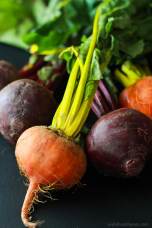
A distinct food chock-full of antioxidants, deep color, makes beets a prime example! The umbrella category of antioxidants includes a great deal of substances. In general, they fight to repair the cell damage caused by inflammation. In the case of beets, the antioxidant betalain gives them their signature color and is an excellent anti-inflammatory. When added to the diet, beet benefits include repairing cells and adding high levels of inflammation-fighting potassium and magnesium.
Beets also contain quite a bit of magnesium, and a magnesium deficiency is strongly linked with inflammatory conditions. Calcium, while a vital nutrient, is not processed well within the body without magnesium. When calcium builds up in some areas of the body, it becomes unwanted — this unpleasant buildup, such as calcified kidney stones, then invites inflammation or in the case of plaquing of the arteries is a response to inflammatory damage. But when a balanced diet is consumed, with anti-inflammatory foods rich in calcium as well as magnesium, the body better processes what’s consumed and can in fact reverse these adverse affects.
- Broccoli
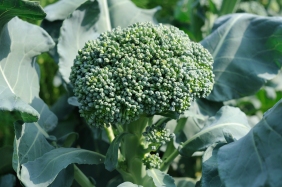
The poster vegetable for healthy eating, it’s no secret that broccoli is a valuable addition to any diet. For an anti-inflammatory diet, it’s invaluable. Broccoli is high in both potassium and magnesium, and its antioxidants are particularly potent anti-inflammatory substances in their own right.
Broccoli is an antioxidant powerhouse, with key vitamins, flavonoids and carotenoids. These work together to lower oxidative stress in the body and help battle both chronic inflammation and the risk of developing cancer.
- Blueberries
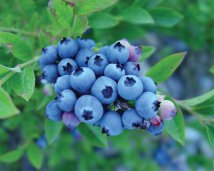
One antioxidant in particular stands out as an especially strong anti-inflammatory, and that’s quercetin. Found in citrus, olive oil and blue berries, quercetin is a flavonoid (a beneficial substance or phytonutrient that’s prevalent in fresh foods) that fights inflammation and even cancer. The presence of quercetin is one of the health benefits of blueberries.
In a study seeking treatment for IBD, an extract from the noni fruit was used to affect the gut flora and colon damage done by inflammatory diseases. Of the effects the extract had, quercetin created the prominent anti-inflammatory actions.
Another study found that consuming more blueberries slowed cognitive decline and improved memory and motor function. The scientists in this study believed these results were due to the antioxidants in blueberries protective the body from oxidative stress and reducing inflammation.
- Salmon
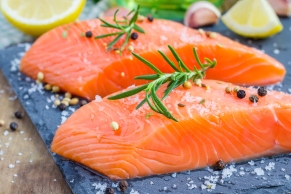
Salmon is an excellent source of essential fatty acids, and considered one of the best omega-3 foods. Omega-3s are some of the most potent anti-inflammatory substances, showing consistent relief of inflammation and reduction of the need for anti-inflammatory medications.
Research shows that omega-3 fatty acids reduce inflammation and may help lower risk of chronic diseases, such as heart disease, cancer and arthritis. Omega-3 fatty acids are highly concentrated in the brain and appear to be important for cognitive (brain memory and performance) and behavioral function.
The source of fish and meat among anti-inflammatory foods is a vital component. One of the dangers of farmed fish is it doesn’t have the same nutrients as wild-caught salmon.
- Walnuts
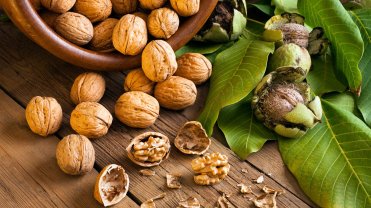
When following a diet without a lot of meats, nuts and seeds can make up the difference for protein and omega-3s. Add omega-3-rich walnuts to green leafy salads drizzled with olive oil for a satisfying anti-inflammatory meal, or grab a handful for an on-the-go snack. In fact recent studies have shown that nuts and seeds in the diet have an anti-aging effect.
Phytonutrients can help protect against metabolic syndrome, cardiovascular problems and type 2 diabetes. And some phytonutrients in walnuts are hard to find in any other foods.
- Chia seeds

Fatty acids found in nature are more balanced than the fats we typically consume in our common diets. Chia seeds benefits, for example, offer both omega-3 and omega-6, which should be consumed in balance with one another.
Chia are an antioxidant, anti-inflammatory powerhouse, containing essential fatty acids alpha-linolenic and linoleic acid, mucin, strontium, vitamins A, B, E, and D, and minerals including sulphur, iron, iodine, magnesium, manganese, niacin, thiamine.
Chia seeds’ ability to reverse inflammation, regulate cholesterol and lower blood pressure make it extremely beneficial to consume for heart health. Also, by reversing oxidative stress, someone is less likely to develop atherosclerosis when they’re regularly consuming chia seeds.
- Turmeric
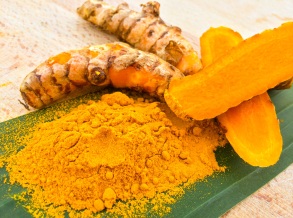
Turmeric’s primary compound, curcumin, is its active anti-inflammatory component. Documented for its affects against inflammation in numerous circumstances, turmeric health benefits prove invaluable in an anti-inflammatory diet.
The journal Oncogene published the results of a study that evaluated several anti-inflammatory compounds. It found that aspirin (Bayer, etc.) and ibuprofen (Advil, Motrin, etc.) are least potent, while curcumin is among the most potent anti-inflammatory and anti-proliferative agents in the world.
Due to its high anti-inflammatory properties, turmeric is highly effective at helping people manage rheumatoid arthritis (RA). A recent study out of Japan evaluated its relationship with interleukin (IL)-6, the inflammatory cytokine known to be involved in the RA process, and discovered that curcumin “significantly reduced” these inflammatory markers.
- Ginger
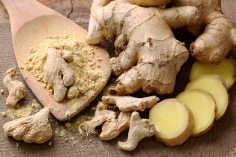
Used fresh, dried, or in supplement form and extracts, ginger is another immune modulator that helps reduce inflammation caused by overactive immune responses.
Ayurvedic medicine has praised ginger’s ability to boost the immune system before recorded history. It believes that because ginger is so effective at warming the body, it can help break down the accumulation of toxins in your organs. It’s also known to cleanse the lymphatic system, our body’s sewage system.
In fact, ginger health benefits may even include treating inflammation in allergic and asthmatic disorders.
A diet plentiful in nutrient dense foods which has a variety is the best way to give the body what it needs. Your health is our concern. If you have questions regarding this article or your health please feel free to contact me. May you have a healthier tomorrow.


